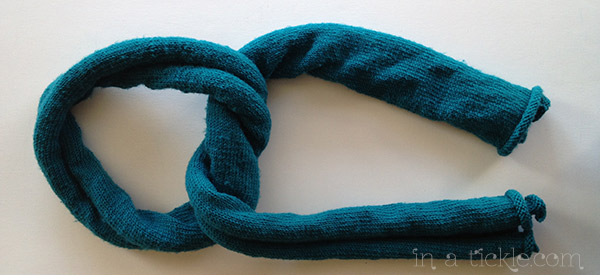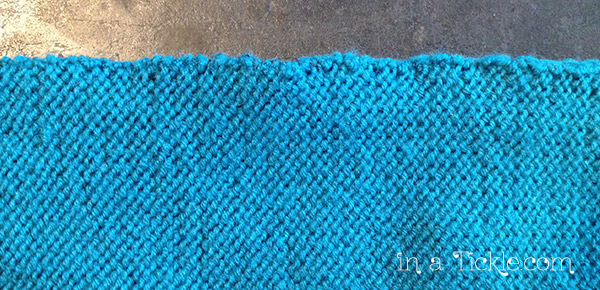Nearly two years ago I decided to give knitting another try while visiting my daughter. You can read about it in this post. On the next visit in the fall of that year, I purchased some very soft Superwash Merino yarn at the Lion Brand Yarn Studio (a wonderfully inspiring shop to visit in NYC) to knit myself a scarf. I decided to just do the whole thing by knitting a row and purling a row, just to get the process imbedded in my brain and my finger muscles. I later learned this stitch is called the stockinette stitch. The scarf did not get completed by winter and when spring rolled around, I set that project aside. A few weeks ago I picked it up again, had to relearn what I was doing, did a lot of “reverse stitching”, learned how to make corrections when something went wrong and almost quit several times. However, I decided it was not going to conquer me and I would FINISH!
What I learned from experience is the stockinette stitch loves to curl at all the edges of your piece, which is why experienced knitters know to plan some kind of border edge when making scarves so the scarf lays flat instead of curling into a rope. (Here is an explanation of why it curls.)
After reading online of several “possible” solutions, I decided the best route for me was to hand stitch the long edges together. I used all of the yarn on the scarf and had to sew the sides together with regular thread.
When I turned it right side out, it laid flat. With the temperatures dropping to frigid a double thick scarf will feel great.
Next time I knit a scarf, I will probably follow a pattern. But I can say I learned much more about knitting with completing this project— and that feels good!



